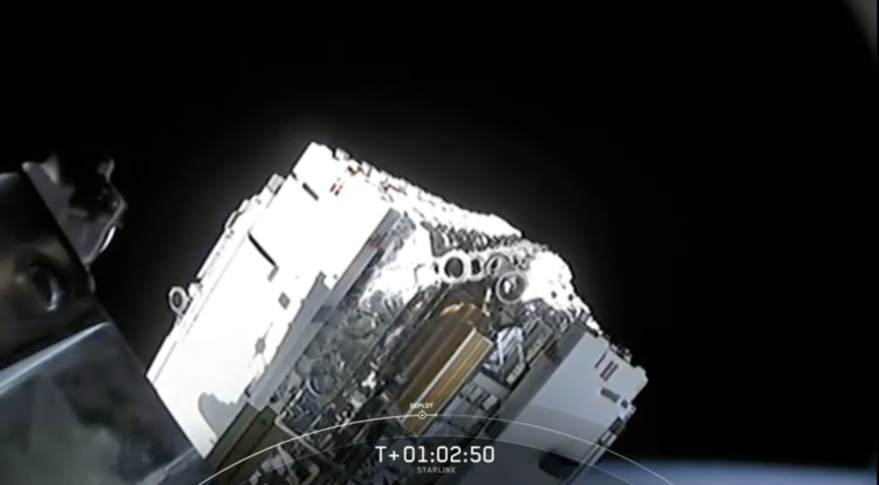Broken_Erika
Play with me.
So, r16 was influenced by an F16 thing he read when he was 16?
So, r16 was influenced by an F16 thing he read when he was 16?
Who would have said in 1969 we would be struggling to reach the moon in 2024.The comparison with Apollo is unfair. We're light years ahead of where they were back then and for the kind of mission NASA is currently planning, it shouldn't cost more than Apollo unless they were doing it very, very wrong. But politics are involved so you can't discount gross mismanagement.
All that said, it isn't enough money and it's doubtful this program would survive a presidential handover. Although it did survive Obama's attempts to kill it, so who knows? It's a powerful jobs program, if exceedingly wasteful and badly run.
The important thing right here and now is that they have an actual plan they're working toward. Giving it a name was more than symbolic; I really think it means that everyone in NASA is congealing around a real game plan. Until now, everything's been exceedingly wishy-washy and none of the NASA centers involved were really being held accountable for how badly they were allowing Boeing et al to run things off the rails.
Bridenstine has really taken those centers to task and given the whole agency a direction to march in. He's literally the only good thing about the Trump administration in my opinion. He went from climate change denier while in Congress to a big proponent of NASA climate change missions and has defended his LGBT workforce from punitive Trump edicts.
It's not a great game plan but it's a plan. And most importantly, they've taken big steps to open it up to American industry even outside of the big traditional players like Lockheed and Boeing. They're also successfully rallying international allies like Canada to the mission and if they some how make it to launch next year, I think the program might have a chance of hitting the moon in 2024.

Congress (the House) took a whack at the budget and they are removing funds for the lander, pushing the landing back to 2028. The budget has multiple rounds of iterations before it becomes law (if it does become law - who knows what will happen with this government) so this isn't the final word yet.
I also found out that in addition to raiding funds from Pell Grants to pay for the landers, Trump was also proposing deep cuts to certain science divisions in NASA. Congress put those funds back where they were and have no interest in accelerating the moon program. They are content to let it peddle on to nowhere as it has for the last two decades. It's great for employment in Texas, Alabama, Mississippi and Florida, at least.
----------
Turns out Boeing new about all sorts of issues with the 737 Max and still flew it. Also, they were charging something like $4k to add an LED that would light up to tell the pilots when their auto-trim system was malfunctioning.
Now, new evidence about the Moon's crust suggests the differences were caused by a wayward dwarf planet colliding with the Moon in the early history of the solar system.
They found the best fit for today's asymmetrical Moon is a large body, about 480 miles (780 kilometers) in diameter, smacking into the nearside of the Moon at 14,000 miles per hour (22,500 kilometers per hour). That would be the equivalent of an object a bit smaller than the dwarf planet Ceres moving at a speed about one-quarter as fast as the meteor pebbles and sand grains that burn up as "shooting stars" in Earth's atmosphere. Another good fit for the impact combinations the team modeled is a slightly smaller, 450-mile (720-kilometer) diameter, object hitting at a mildly faster 15,000 miles per hour (24,500 kilometers per hour).
The measurements made by the researchers from Münster show that the molybdenum isotopic composition of the Earth lies between those of the carbonaceous and non-carbonaceous meteorites, demonstrating that some of Earth's molybdenum originated in the outer solar system.
I'm reading a book on planet formation and so far it seems like Earth developed more or less where it is now.https://phys.org/news/2019-05-formation-moon-brought-earth.html
Now thats interesting. Their explanation is Theia (impactor resulting in the Moon) came from further out in the solar system and was therefore richer in water bearing carbonaceous material. There is another explanation, the Earth came from further out in the solar system. If the Earth's molybdenum is between the dry inner solar system and wet outer solar system, the Earth may have formed between the two zones. Thats where the asteroid belt is located, thats where the dry inner solar system met the wetter outer solar system. Thats where the early solar system's 'freeze line' was located, where gas being blown out by the solar wind began condensing and freezing.
I'd expect the solar system's first planet to form there surrounded by condensing gas, surrounded by water. I'd like to know how far out they think Theia formed, I wont be shocked if they determine the asteroid belt was its original location.
edit: no, Theia would have to be more distant to make up for the Earth's alleged lack of isotopic molybdenum. That would it put it in Jupiter's vicinity.


